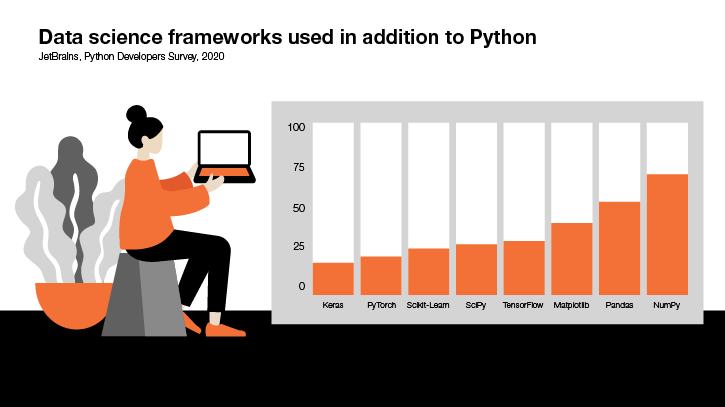- Services
Technology Capabilities
Technology Capabilities- Product Strategy & Experience DesignDefine software-driven value chains, create purposeful interactions, and develop new segments and offerings
- Digital Business TransformationAdvance your digital transformation journey.
- Intelligence EngineeringCreate high-value products faster with AI-powered and human-driven
- Software Product EngineeringCreate high-value products faster with AI-powered and human-driven engineering.
- Technology ModernizationTackle technology modernization with approaches that reduce risk and maximize impact.
- Embedded Engineering & IT/OT TransformationDevelop embedded software and hardware. Build IoT and IT/OT solutions.
- Industries
- GlobalLogic VelocityAI
- Insights
White PapersSeptember 17, 2024Diana SocaciuElevating Romanian Tourism with GlobalLogic: Apuseni App
The innovative banking apps, such as the one we'll explore in this case study, succeed ...
 Case StudiesGlobalLogic
Case StudiesGlobalLogicFrom Legacy to Leading-edge: A Global Software Leader’s ...
Discover how GlobalLogic’s AI-powered solutions helped a global software leader migrate...

- About
Published on January 10, 2024Python Libraries for Machine Learning and AI: Getting the Most Out of Python Development Services
View all articlesVencel Biro.NET Competency Head | EngineeringShareLet's start engineering impact together
GlobalLogic provides unique experience and expertise at the intersection of data, design, and engineering.
Get in touchAI GovernanceAnalyticsData EngineeringTechnologyMachine learning (ML) and artificial intelligence (AI) are two emerging technology areas expected to achieve massive growth in the coming years. According to MarketsandMarkets, the global machine learning market will grow to USD 8.81 billion in 2022, and International Data Corporation (IDC) reports that the global artificial intelligence market is expected to break the USD 500 billion mark in 2023.The COVID-19 pandemic accelerated the adoption of these emerging technologies, and businesses are eager to gain a competitive edge and enhance customer experience. With the various machine learning applications across several industries, from retail to healthcare, getting the most out of machine learning is paramount.
Some businesses are already seeing benefits from integrating AI into their processes at a more accelerated rate than previously planned. Frito-Lay, an American subsidiary of PepsiCo that manufactures, markets, and sells snack foods, ramped up its digital and data-driven initiatives, compressing five years’ worth of digital plans into six months.
The need to analyze data has grown in organizations across all industries in the last couple of years, and the Python software development environment supports the analysis of large and complex sets of data through machine learning. Thus, coupled with a “batteries-included” philosophy and great math library support, Python has grown in popularity.
This article will explore what makes Python the best programming language for machine learning and AI.
Table of Contents
- Why Do We Prefer Python to Implement Machine Learning Algorithms?
- What Makes Python One of the Most Successful AI Programming Languages?
- Why is Python so Popular with Developers?
- Implementing Python Development Services
Python stands out in the digital world, as developers have relied on its versatility and efficiency for over 30 years.
The programming language is a powerful tool for data science (artificial intelligence and machine learning solutions) as it performs great with tasks like data manipulation and automation of repetitive tasks. This encourages businesses, from startups to multi-billion-dollar companies, to create complex and innovative applications using Python development services.
Why Do We Prefer Python to Implement Machine Learning Algorithms?
Software developers write machine learning algorithms using Python because this popular and general-purpose programming language has a diverse variety of modules and libraries already implemented.
From development to deployment and maintenance, Python helps developers by being concise and readable, which is beneficial to machine learning projects. It is also fast compared to many programming languages, and it allows developers to test algorithms without implementing them.
What makes Python One of the Most Successful AI Programming Languages?
Python has well-structured code, a clean syntax, and for developers it is easy and fast to incorporate libraries, and this makes it perfect for AI programming. Due to its popularity, compared to other programming languages, many algorithms are already written and available to everybody, so for junior Python developers is an easy start even if they’ve never written any code for AI. More so, Python offers a rich ecosystem that helps developers at every step. For example, with the Matplotlib library, they can build static, animated, and interactive visualizations.
Why is Python so Popular with Developers?
In 2021, Python was the third most popular language among developers, according to the 2021 Stack Overflow Developer Survey. Also, 67% of respondents mentioned that they love working with the language.
But what makes Python so popular? Here are just a few reasons we’ve gathered from our Python software engineers:
Low Barrier to Entry
Getting started with Python is easier for developers than with compiled languages like Java due to its human-friendly syntax and loose typing. This easy readability and quick feedback when coding means that developers can quickly get up to speed on the language.
Vibrant Community
Python has an expansive and vibrant community of developers who have been working with the language for quite some time. There’s an abundance of documentation and support for developers of all skill levels to lean on.
Platform Independence and Flexibility
Python can be used on Windows, Mac, and Linux platforms and is the standard language for scripting DevOps tooling on native cloud platforms. Developers aren’t restricted in the types of applications they use Python to build, giving them the freedom to build applications for the web, mobile devices, and more.
Abundance of Libraries
Python has an extensive list of open source and proprietary libraries. With libraries, developers don’t have to code everything independently, simplifying things and speeding up development velocity.
Some of these frameworks offer good visualization tools. Considering that in machine learning and AI, it is essential to present data in a human-readable format, Python is a perfect choice for implementing this feature.
Plus, with the expansive community and major companies like Google and Facebook backing Python, support for library development isn’t expected to slow down.
Extensive Selection of Libraries and Frameworks
Let us briefly look at some exciting Python libraries for ML and AI development:
-
- TensorFlow
TensorFlow by Google is arguably an essential library when doing machine learning work. It enables developers to create and train machine learning models that can be deployed to servers or run on clients. The primary focus of TensorFlow is on building deep learning models and delivering high-end numerical calculations. Some features include abstraction, handling deep neural networks, image, text, and speech recognition, natural language processing (NLP), and easier collaboration of ideas and code. - Keras
Keras is an open-source neural network library for Python initially designed by Google engineer François Chollet. Previous versions of Keras could be run on top of TensorFlow, Theano and R. However, in the latest release, version 2.4, Keras only supports TensorFlow. Keras simplifies working with TensorFlow by providing neural network and convolutional neural network building blocks. Some of its features include neural layers, batch normalization, dropout, and pooling. Keras also includes support for distributed training of neural networks – an important consideration given how intensive the training process is, especially with large image sets or video inputs. - PyTorch
PyTorch is a popular library developed by Facebook. The library can be used for applications like NLP, computer vision, and ML. Features of PyTorch include an easy learning curve, the ability to integrate with other Python ML libraries, and its tensor computing model (for calculations on multidimensional rectangular arrays of numbers) which enables accelerated processing via GPUs.
- TensorFlow
- Pandas
A python library used for data analysis and manipulation. Pandas makes it easy to work with time series and multidimensional structural data. It helps engineers save time preparing data and analyzing patterns and data from various sources, including CSV, Excel, and SQL databases. Pandas is a cornerstone library for performing extract, transform, and load (ETL) operations. ETL is the starting point for ML workloads as data engineers evaluate available sources of information in an organization and write scripts to extract helpful data points for further analysis and model training, outputting it to data stores. Some of Pandas’ features include joining and merging datasets, pivoting and reshaping datasets, handling missing data, and an abundance of data filtering options. - Theano
Theano provides an easy way to define, optimize, and evaluate complex mathematical expressions. It acts as a compiler for expressions, allowing fast and repetitive calculations to be carried out. Theano makes it possible to do this much faster than with only a CPU. It features GPU support to perform these high-powered computations, integrates well with NumPy, and enables you to extend Theano with custom C code for mathematical operations. - NumPy
NumPy handles extensive multidimensional data arrays and matrices. It takes an object-oriented approach and combines the power of C, C++, and Fortran with Python. Some of the features of NumPy include shape manipulation, random simulations, Fourier transformations, and other complex mathematical equations. - SciPy
SciPy relies and builds on the multidimensional arrays built by the NumPy library. SciPy was built to provide user-friendly functions for working with NumPy arrays. Some of SciPy’sfeatures include image optimization, linear algebra, signal and image processing, and integration interpolation. - Scikit-Learn
Built on top of NumPy and SciPy, Scikit-Learn is a popular library for developing ML algorithms and can interoperate with these libraries. It assists both supervised (where the data set is annotated with the result desired, such as pictures of food with a label indicating the type of food) and unsupervised (where the algorithm is used to gain insights about unlabeled data sets) ML with clustering, regression, classification and model selection.

Implementing Python Development Services
Python libraries provide a great starting point for businesses to get the most out of AI and ML technologies.
Python is ideal for both start-ups and enterprises, and through our agile methodology and development processes, we can provide support for:
- Business process automation;
- Implementing Extract-Transform-Load workflows;
- Predictive maintenance solutions;
- Chatbots for instant messaging and more.





